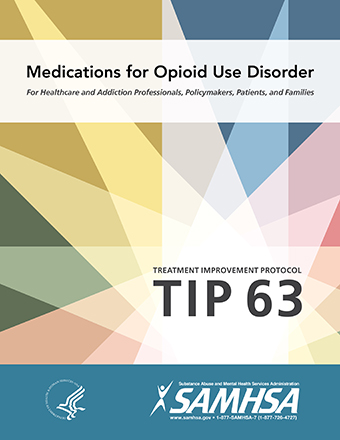
Improving Treatment for Opioid Use Disorder in Rural and Urban Communities, Principal Investigator: Jamey Lister, PhD

 Opioid Crisis. The state of Michigan now has the 15th highest death overdose death date in the U.S. after significant increases in 2015 and 2016. Nationally, the overdose death rate is highest in rural areas, while overdose death rates are highest in low-income urban areas of Michigan (Wayne, Macomb, Monroe, Jackson, and Calhoun Counties). Young and middle adults, those living in poverty, and people with health insurance hardships are at highest risk for overdose death. Evidence-Based Treatment. It is imperative people with opioid use disorder [OUD] are able to access medication-assisted treatment (MAT), the gold standard of care and preferred modality of the National Institute on Drug Abuse, World Health Organization, and American Society of Addiction Medicine. MAT involves medications, like methadone, provided in specialty clinics, or buprenorphine, in office-based settings. Medications help suppress cravings and prevent relapse, and better long-term outcomes are more likely to occur when psychosocial treatment is provided alongside medications. Barriers to Treatment. Accessing MAT is challenging for many Michigan residents. Across all communities, there are shortages of available medication providers, and particularly limited availability of providers in rural areas. Rural Michigan counties are 38 times less likely than urban counties to have opioid-specialty clinics (equipped to provide medications and psychosocial treatment). Furthermore, more than half of rural Michigan counties lack a single medication provider, compared to approximately 10 providers in each urban county. Beyond treatment shortages, people with OUD often live in poverty and rely on public health insurance, which can exclude certain providers and make paying out-of pocket and arranging transportation for treatment implausible. Unfortunately, this leaves far too many people at high-risk for overdose deaths. Ongoing Research Projects. To address these public health concerns, Dr. Jamey Lister is involved with multiple OUD studies in disadvantaged urban and rural areas of Michigan. These projects include research studies on treatment outcome predictors and minority health needs among patients at a university-affiliated methadone clinic in Detroit and a mixed-methods study examining consumer characteristics and provider-level barriers to MAT among rural Michigan communities. He also aids with research on the State Targeted Response to the Opioid Crisis Grant (funded to Michigan’s DHHS through SAMHSA) and collaborates with telemedicine addiction programs to improve treatment access to low-income areas of rural Michigan.
Opioid Crisis. The state of Michigan now has the 15th highest death overdose death date in the U.S. after significant increases in 2015 and 2016. Nationally, the overdose death rate is highest in rural areas, while overdose death rates are highest in low-income urban areas of Michigan (Wayne, Macomb, Monroe, Jackson, and Calhoun Counties). Young and middle adults, those living in poverty, and people with health insurance hardships are at highest risk for overdose death. Evidence-Based Treatment. It is imperative people with opioid use disorder [OUD] are able to access medication-assisted treatment (MAT), the gold standard of care and preferred modality of the National Institute on Drug Abuse, World Health Organization, and American Society of Addiction Medicine. MAT involves medications, like methadone, provided in specialty clinics, or buprenorphine, in office-based settings. Medications help suppress cravings and prevent relapse, and better long-term outcomes are more likely to occur when psychosocial treatment is provided alongside medications. Barriers to Treatment. Accessing MAT is challenging for many Michigan residents. Across all communities, there are shortages of available medication providers, and particularly limited availability of providers in rural areas. Rural Michigan counties are 38 times less likely than urban counties to have opioid-specialty clinics (equipped to provide medications and psychosocial treatment). Furthermore, more than half of rural Michigan counties lack a single medication provider, compared to approximately 10 providers in each urban county. Beyond treatment shortages, people with OUD often live in poverty and rely on public health insurance, which can exclude certain providers and make paying out-of pocket and arranging transportation for treatment implausible. Unfortunately, this leaves far too many people at high-risk for overdose deaths. Ongoing Research Projects. To address these public health concerns, Dr. Jamey Lister is involved with multiple OUD studies in disadvantaged urban and rural areas of Michigan. These projects include research studies on treatment outcome predictors and minority health needs among patients at a university-affiliated methadone clinic in Detroit and a mixed-methods study examining consumer characteristics and provider-level barriers to MAT among rural Michigan communities. He also aids with research on the State Targeted Response to the Opioid Crisis Grant (funded to Michigan’s DHHS through SAMHSA) and collaborates with telemedicine addiction programs to improve treatment access to low-income areas of rural Michigan.
Key Publications and Public Scholarship
- Lister, J.J., Greenwald, M.K., & Ledgerwood, D.M. (2017). Baseline risk factors for drug use among African-American patients during first-month induction/stabilization on methadone. Journal of Substance Abuse Treatment, 78, 15-21.
- Lister, J.J., Weaver, A., Ellis, J.D., Ledgerwood, D.M., & Himle, J.A. (under review). Availability of medication-assisted treatment clinics and practitioners in Michigan. A comparison of non-metropolitan and metropolitan counties. Manuscript under review.
- Lister, J.J. (2017, Nov). The opioid crisis is at its worst in rural areas. Can telemedicine help? The Conversation. Retrieved from: https://theconversation.com/the-opioid-crisis-is-at-its-worst-in-rural-areas-can-telemedicine-help-86598
- Lister, J.J., Brown, S., Greenwald, M.K., & Ledgerwood, D.M. (under review). Gender-specific predictors of methadone treatment outcomes among African Americans at an urban clinic. Manuscript re-submitted with revisions.
- Moses, T.E., Woodcock, E.A., Lister, J.J., Lundahl, L.H., & Greenwald, M.K. (2018). Developing a scale of domains of negative consequences of chronic heroin use. Addictive Behaviors, 77, 260-266.
- Reid, H.H., Lundahl, L.H., Lister, J.J., Woodcock, E.A., & Greenwald, M.K. (2018). Mediational pathways among trait impulsivity, heroin-use consequences, and current mood state. Addiction Research & Theory, 26(5), 421-429.
- Ledgerwood, D.M., Lister, J.J., LaLiberte, B., Lundahl, L.H., & Greenwald, M.K. (under review). Injection opioid use as a predictor of treatment outcomes among methadone-maintained opioid-dependent patients. Manuscript under review.
- Stoltman, J.J.K., Woodcock, E.A., Lister, J.J., Greenwald, M.K., & Lundahl, L.H. (2015). Exploration of the telescoping effect among not-in-treatment, intensive heroin-using research volunteers. Drug and Alcohol Dependence, 148, 217-220.
- Lister. J.J. (2018, Feb). How do we fix the opioid crisis in rural communities? Stockbridge Community News 2018. Retrieved from: http://stockbridgecommunitynews.com/how-do-we-fix-the-opioid-crisis-in-rural-communities/
- Lister, J.J. & Canty, C. (2018, Jan). Telemedicine could be effective weapon in war on opioid addiction in rural Michigan. Michigan Radio’s Stateside 2018. Retrieved from: http://michiganradio.org/post/telemedicine-could-be-effective-weapon-war-opioid-addiction-rural-michigan
- Stoltman, J.J.K., Woodcock, E.A., Lister, J.J., Lundahl, L.H., & Greenwald, M.K. (2015). Heroin delay discounting: modulation by pharmacological state, drug-use impulsivity and intelligence. Experimental and Clinical Psychopharmacology, 23(6), 455-463.

